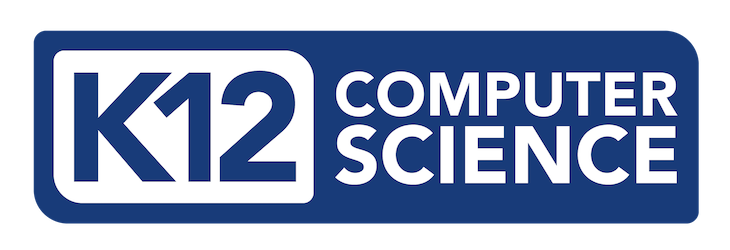The full version of this content can be found in the Implementation Guidance chapter of the complete K–12 Computer Science Framework.
 The framework lays out the big ideas that students should understand by the end of a grade band but does not encompass all of the learning that can take place within that grade band. Although the framework focuses on an essential foundation in computer science, schools and teachers are encouraged to create additional supporting material and extend instructional experiences beyond these baseline competencies, while giving special consideration to developmental appropriateness.
The framework lays out the big ideas that students should understand by the end of a grade band but does not encompass all of the learning that can take place within that grade band. Although the framework focuses on an essential foundation in computer science, schools and teachers are encouraged to create additional supporting material and extend instructional experiences beyond these baseline competencies, while giving special consideration to developmental appropriateness.
Considerations for Curriculum
When selecting or developing curriculum, instructional materials, and computing tools (such as programming environments) that align to the framework, reflecting on the following pedagogical considerations is important. Curricula aligned to the framework should:
- Provide a comprehensive view of computer science informed by the five core concepts and seven core practices of computer science as delineated in the framework.
- Be developmentally appropriate per the grade-band progressions in the framework and fit into a coherent K–12 experience.
- Integrate the concepts and practices into meaningful experiences for students, rather than solely focus on the concepts.
- Be designed from a “content-first” perspective, in which programming tools, equipment (e.g., robots), and even languages, are a vehicle for learning the concepts and practices, rather than becoming the focus themselves.
- Offer opportunities to create innovative technologies within socially relevant and culturally situated contexts.
Modern computer science education does not often require complex hardware setups or software configurations, although some basic technical conditions must be in place. Although some computer science education curricula and programs require locally installed resources, many computer science education programs and curricula now exist online.
Considerations for Assessment
There are several important facets of classroom computer science assessments to consider. Assessments aligned to the vision of the framework should:
- Make use of project-based and portfolio-based assessment methods to authentically measure performance.
- Reflect multiple aspects of computer science as defined by the five core concepts and seven practices of the framework. Even when programming is the focus, students should be assessed on not only their ability to write the program but also their ability to communicate the product’s significance and development process (Communicating About Computing), including the collaboration among members (Collaborating Around Computing).
- Take advantage of platforms dedicated to computer science that allow students to create programs such as games, apps, and simulations within an environment that also collects data, analyzes achievement, and communicates progress to both students and teachers. Online learning and assessment platforms also have the potential for reaching students in rural school districts, which are often at a disadvantage in finding teachers in high-need subject areas, such as computer science.
Building Course Pathways
Courses and curriculum do not exist in an instructional vacuum and should take into account the concepts and practices as laid out across the four grade bands in the framework. In the following examples, a computer science experience can range from a few hours a week to a semester- or year-long course. The different models in each grade band are organized by an estimate of the total amount of focused computer science instructional time that the model may allow, from least to greatest. The examples within each grade band are not mutually exclusive; many options can be combined to create additional avenues for computer science instruction.

For policy ideas that promote and support implementation, see Making Computer Science Fundamental to K–12 Education: Eight Policy Ideas.
